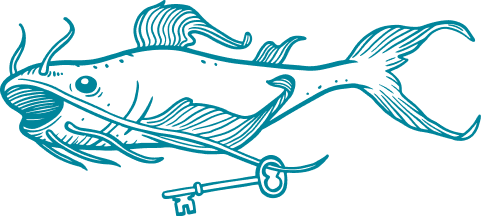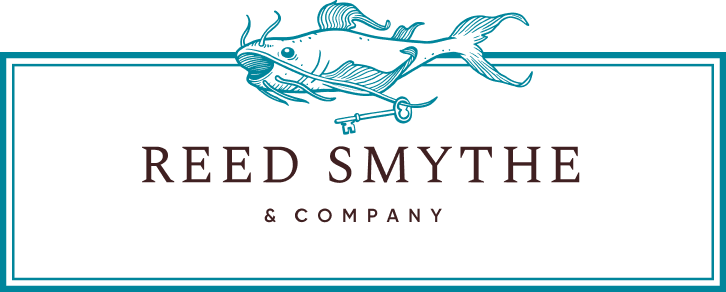A Travel Guide to Normandy

Visit any small town in France, and you will undoubtedly hear locals extol the virtues of “La France Profonde.” Depending on who’s translating, the phrase can mean deep France or profound France, or both. But the spirit of the expression suggests something more complex— that the truest France is found only beyond the cosmopolitan city centers, in the rural life of villages, rolling hills, and gentle farmland.
I’ve been lucky enough to experience some of the most beautiful parts of La France Profonde. I once spent a week with a friend visiting her in-laws in Auvergne in a village near Laguiole, famous for its horn-handled knives. We milked cows and helped bale hay and slept in the loft of an old converted barn - not because the family had some vision of weekend-house chic, but because that’s where they lived. Another friend introduced me to his family in the southwestern part of the country near Pau. The morning we arrived, his aunt, Amélie, went out the back door of what can only be called a cottage, wrung the neck of a duck, and announced we’d be having magret de canard for dinner.

A typical house in a Norman Village, Beaumont-en-Auge
A few days ago, my family and I returned from Normandy, a region I knew very little about, and which had not been on my childrens’ list of top-10 vacation destinations. We were there to celebrate the 80th anniversary of the D-Day landings, and while they were interested in that aspect of the trip, they argued for a drive to the beaches from Paris and an overnight stay at most. How wrong they were! Normandy is the embodiment of La France Profonde, with its heartbreakingly beautiful village streets, lined with half-timber houses and crumbling garden walls. Foxgloves and poppies grow wild along the hedgerows (which we learned had been a major obstacle as the Allies advanced towards Paris). Rows of craggy apple trees animate the landscape, and orchard owners along every tiny backroad invite guests in to sample their cidre and Calvados.
So many people are heading to Paris this summer to take in the Olympics. If you’re able to spare a few days - or a week - outside the city, consider a trip to Normandy. A three hour car ride from Paris to the D-Day beaches, it’s the perfect place to experience another side of France. Here is a day-by-day guide to our new favorite spots to visit.

Le Pressoir des Capucines, an old cider press renovated into a weekend home
Where to Stay
Because we were traveling with a large group, our family chose to rent a house in a tiny village near Deauville, on the coast. If you’re interested in exploring rentals in Normandy, Le Collectionist has lovely (if only a few) offerings, and because Normandy is far less popular as a vacation spot than the Riviera or Provence, the prices are much more forgiving.
If you’re only visiting for a few days, the Villa Lara in Bayeux (home of the famed Bayeux Tapestry and close to D-Day historical attractions) came highly recommended.
Deauville has plenty of lovely hotels, and we enjoyed being near this seaside spa town for its central location to many of the attractions of the area.
Getting There
While you can certainly take a train from Paris to several locations in Normandy, the beauty of the place lies on the backroads and in the tiny villages that are really only accessible by car (or bike if you’re staying in the area).
What to Do

Monet's Giverny
Day 1:
Driving out from Paris, the small town of Giverny, where Monet painted the iconic Nymphées, makes the perfect lunch stop. Reserve tickets in advance, tuck into a seat overlooking a beautiful garden at Restaurant Baudy, where Monet was said to have dined often, then walk to the museum just up the narrow pedestrian lane.
The house museum and gardens are an easy walk from the restaurant. Crowded on any day, the Monet House is more pleasantly visited on a weekday when the bus crowds are de minimus. The gardens are gorgeous and the house contains many of the furnishings - if not the original art - that were there in Monet’s day.
Depending on where you are staying, the drive from Giverny can take an hour and a half (Deauville) or two and a half hours (Bayeux). Regardless, if you have the energy, a stop for coffee or an aperitif and a walk around the old harbor and the backstreets of Honfleur will orient you to the beautiful architecture of the region. It’s also nice to experience a seaside town before heading into the more central villages away from the coast. They couldn’t be more different.
If Honfleur is on a list for another day, a cocktail in Deauville and a walk along the famous boardwalk can be another fun stop before heading to your hotel or house. We loved the small restaurant terrace of Le Hibouville in Deauville and returned there a few times during our stay. We even sat near Brigitte Macron one day.
Day 2:
We decided to start our stay in Normandy with a full day of history. We mostly focused on D-Day sites, but do not forget the Bayeux Museum where the tapestry depicting the Norman Invasion of William the Conqueror is housed. The Bayeux Cathedral is a masterpiece, consecrated in 1077 in the presence of Guillaume le Conquerant himself.
If at all possible, arrange a guide to visit the D-Day beaches and the American Cemetery. We started with Utah Beach, then Pointe du Hoc, where the Army Rangers had to scale the steep cliffs of this part of the Norman Coast. The American Cemetery at Omaha Beach is one of the most moving places I have ever visited.

The American Cemetery at Omaha Beach
End the day in Bayeux with a visit to the museum and the cathedral and walk around this beautiful city. The Bayeux Museum combines three museums in different locations, and the Baron Gérard Museum of Art and History is well worth the visit for a romp through art from prehistory to the 20th century. A visit to Bayeux could be its own day.
Day 3:
The Route du Cidre (Cider Route) is one of the prettiest parts of France I have ever visited, with its apple orchards and gentle hills, fields of horses and cows grazing, and picturesque villages with almost no tourists. Though not officially on the Route, it’s possible to start your visit in the beautiful town of Beaumont-en-Auge - birthplace of mathematician Pierre-Simon LaPlace. The charming town offers many wonderful examples of Norman architecture and is a great place to look over the fields below, grab a coffee, or - if you prefer to get a late start - to have lunch before hitting the cider and Calvados producers.

A cider and Calvados tasting on the Route du Cidre
We decided to bike a portion of the route, and I highly recommend this way of touring. Renting an electric bike is helpful if you’re not a seasoned biker, and there are several bike rentals in Deauville and Bayeux. We started near Deauville and biked to from Bonnabosq to Cambremer, passing several farms where cider tasting is possible. We most loved Manoir de Gradouet near Cambremer, where we were able to taste several ciders and different ages of Calvados. We purchased small bottles of our favorites (mine was a pear cider) and drank it sitting on the banks of a water-lilly filled pond looking out on the village church. Stunning. If I had it to do all over again, I would have packed a picnic. In the event that a restaurant is on order, return to Beaumont-en-Auge for lunch or dinner or carry on, if you’re driving, and finish the route, which only takes an hour by car.
Day 4:
Although it is the most-visited cultural site in France outside of Paris, Mont-St-Michel is worth braving the crowds to see. It sits along the part of the coast where Normandy becomes Brittany, and we decided to make the fairly long drive from Deauville to a trailhead near St. Malo so we could hike and picnic before making our way to Mont-Saint-Michel. My son is a fan of the AllTrails app, and he chose a beautiful hike for us along the ragged cliffs of Cancale overlooking the Channel. Wild heather, thyme and foxgloves grow between the rocks, and the view out to sea is stunning. The hike was moderate to easy with good walking shoes.
After lunching on a rock overlooking the water, we packed up for the 45 minute drive to Mont-St-Michel. There is so much history in this haunting site - an abbey built on top of a rocky foundation in the middle of the Bay and protected by the tides, which made in mostly impassable from the time it was built in the 10th century to several years ago when a causeway was built to shuttle visitors no matter what the tides. We did not hire a guide for this visit, and we found an online self-guided tour to be sufficient. The lower part of the town (it actually has a mayor and a population of 30) is filled with tourist trap restaurants and ice cream shops, so we headed straight to the Abbey. We were very sad to leave before the 6:45 pm vespers service which is open to the public. If you do want to have dinner on the Mont, try reserving at the famous Mere Poulard restaurant located just before the exit. The Poulard family has been serving their famous omelettes and other fare to pilgrims since 1888.
Day 5
Because the weather was so beautiful during our stay - definitely not a given, so pack rain gear and warm layers since it can change quickly on the coast - we spent our last day in Normandy hiking the cliffs at l’Etretat. From Deauville or Bayeux you can pair this day trip with a stop at Honfleur. It’s impressive crossing the bridge near Le Havre where the Seine meets the Channel, but we didn’t visit Le Havre itself. Be sure to revisit Monet's painting Impression, Sunrise, which depicts the sun rising over Monet's hometown of Le Havre and which launched the Impressionist movement and gave it a name.

Étretat's Grand Arch
Étretat sits on a part of the coast where the cliffs are made of chalk, and the sight of brilliant white cliffs topped with green pastures, plunging into a turquoise sea is one of the most dramatic natural wonders we saw in Normandy. The Porte d'Aval arch and L'Aiguille (the Needle), a pillar rising up from the sea, may be familiar from other impressionist paintings made in the area.
 Étretat from the hike overlooking the beach
Étretat from the hike overlooking the beach
Day 6:
We left our last day somewhat unscheduled with plenty of time for one group to shop the high-end boutiques of Deauville, one group to explore more villages and abbeys, and another group to read on the terrace of the lovely house we rented. There is so much more to discover in this beautiful corner of France, we could have stayed for weeks.
If you've spent time in Normandy, we'd love to hear about your favorite spots. This blog offers a primer for those who have never been or have only stayed for a day.








